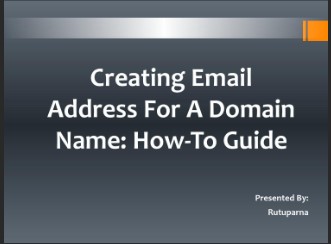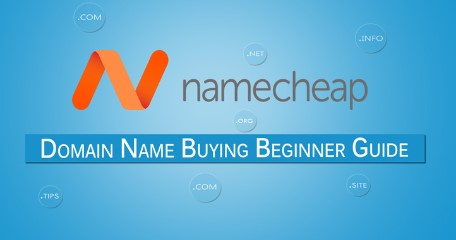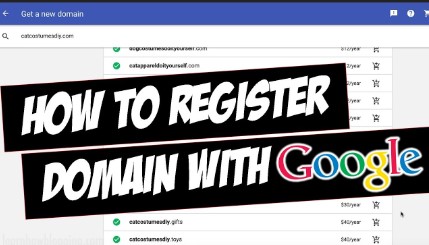Buy Business Email Domain
The WordPress Admin Dashboard serves as the nerve center of your website, offering a comprehensive toolkit for managing and optimizing your online presence.
From content creation to site customization and user management, the dashboard empowers website owners to control their digital assets, driving engagement and growth.
Navigating the WordPress Admin Dashboard
Accessing the Dashboard: Logging In and Getting Started
Upon logging into your WordPress website, accessing the admin dashboard is as simple as entering your credentials and clicking the login button.
Once logged in, users are greeted with a plethora of tools and options to manage every aspect of their website.
Overview of the Dashboard Interface: Panels, Widgets, and Menus
The dashboard interface is designed for intuitive navigation, with panels, widgets, and menus strategically arranged for easy access to key functions.
From the dashboard, users can create and edit content, customize website appearance, manage users, and monitor site performance.
Managing Content
Creating and Editing Posts: Crafting Compelling Blog Content
The heart of any WordPress website is its content, and the dashboard provides a user-friendly editor for creating and editing posts. From writing engaging blog articles to scheduling posts for publication, the post editor offers a range of formatting options to bring your content to life.
Adding and Modifying Pages: Building Your Website Structure
In addition to blog posts, WordPress allows users to create static pages for important website content such as About Us, Contact, and Services pages. The page editor offers similar functionality to the post editor, enabling users to add text, images, videos, and other media to their pages.
Managing Media: Uploading, Organizing, and Optimizing Images and Files
The media library within the dashboard provides a centralized repository for storing and managing images, videos, documents, and other media files. Users can upload files directly from their computer, organize media into folders, and optimize images for faster loading times.
Customizing Your Website
Themes: Selecting, Installing, and Customizing Your Website Design
WordPress offers a wide selection of themes, ranging from simple and elegant designs to complex and feature-rich layouts. Users can browse the theme directory from within the dashboard, install their chosen theme with a single click, and customize it to match their brand identity and preferences.
Plugins: Extending Functionality with Third-Party Add-ons
Plugins are essential tools for adding new features and functionality to your WordPress website. The plugin directory offers thousands of options to suit every need, from SEO optimization and security enhancements to e-commerce integration and social media sharing.
Widgets and Menus: Configuring Site Navigation and Layout
Widgets and menus provide further customization options, allowing users to configure site navigation and layout with ease.
Users can add widgets to sidebars, footers, and other widgetized areas, and create custom menus to organize site navigation according to their preferences.
User Management
User Roles and Permissions: Assigning Access Levels and Responsibilities
WordPress offers a robust system for managing user roles and permissions, allowing website owners to control who can access and modify various parts of the site.
From administrators with full control to contributors with limited editing capabilities, user roles can be assigned and customized to suit your specific needs.
Adding and Managing Users: Inviting Contributors and Administrators
Adding new users to your WordPress website is a straightforward process, requiring only an email address and a username. Once invited, users can set their passwords and access the dashboard according to their assigned roles and permissions.
Password Management: Ensuring Account Security and Authentication
Password security is paramount in maintaining the integrity of your WordPress website. The dashboard provides tools for enforcing strong passwords, implementing two-factor authentication, and monitoring user activity to prevent unauthorized access.
Site Settings and Configuration
General Settings: Configuring Site Title, Tagline, and URL
The general settings tab within the dashboard allows users to configure basic site information such as the site title, tagline, and URL. Additional settings include timezone, language, and site visibility options.
Permalinks: Customizing URL Structure for SEO and Usability
Permalinks play a crucial role in SEO and user experience, and WordPress offers customizable permalink settings to suit your preferences. Users can choose from a variety of permalink structures, including plain, numeric, post name, and custom formats.
Reading and Writing Settings: Managing Content Display and Publishing Options
The reading and writing settings tabs provide further control over content display and publishing options. Users can specify the default post category, set the number of posts displayed per page, and configure RSS feed settings.
Monitoring and Maintenance
Site Health: Checking Performance, Security, and Updates
The site health tool provides valuable insights into the overall health and performance of your WordPress website. From security vulnerabilities to outdated plugins and themes, the site health status page helps users identify and address potential issues before they impact site functionality.
Backups and Restorations: Protecting Your Website Data
Regular backups are essential for protecting your WordPress website against data loss and security breaches. The dashboard offers built-in tools for creating and scheduling backups, as well as restoring previous backups in the event of a site outage or data corruption.
Troubleshooting: Resolving Common Issues and Errors
Despite its user-friendly interface, WordPress users may encounter occasional issues or errors that require troubleshooting. The dashboard provides access to error logs, debug tools, and support forums to help users diagnose and resolve common issues quickly and efficiently.
Conclusion: Maximizing the Potential of Your WordPress Admin Dashboard
The WordPress admin dashboard is a powerful tool for managing and optimizing your website, offering a wide range of features and functions to streamline your workflow and enhance your online presence.
By mastering the various aspects of the dashboard, users can unlock the full potential of their WordPress websites, empowering them to efficiently manage and grow their online businesses.
Recap of Dashboard Features and Functions
From content management and customization to user management and site configuration, the dashboard offers a comprehensive suite of tools for building and maintaining a successful WordPress website.
Encouraging Ongoing Exploration and Optimization
With new updates, plugins, and themes released regularly, there’s always something new to discover and explore within the WordPress ecosystem. By staying curious and proactive, users can continually optimize their websites for performance, security, and user experience.
Empowering Users to Manage and Grow Their WordPress Websites Efficiently
Ultimately, the goal of the WordPress admin dashboard is to empower users to take control of their online presence and achieve their goals. Whether you’re a blogger, business owner, or developer, the dashboard provides the tools and resources you need to create, customize, and manage a successful WordPress website.





